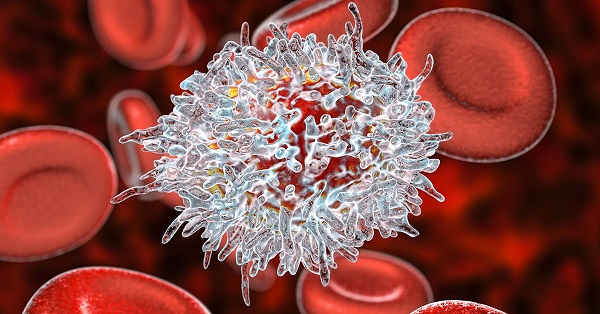What is the Prognosis of Chronic Lymphocytic Leukemia (CLL)?

Chronic Lymphocytic Leukemia
CLL(Chronic lymphocytic leukemia) is cancer that adversely affects the bone marrow and blood. Bone marrow is a spongy and soft substance located within the bones that produces many blood cells. This cancer is mainly caused due to genetic mutation that takes place in the DNA of those cells which produces blood. The main cause of such mutations is not determined.
A person’s bone marrow suffering from CLL produces ample Lymphocyte, which is a kind of white blood cell. Still, they can’t function effectively, which results in further problems by interfering with the production of other blood cells. Some symptoms of CLL are-
- Weight loss
- Large lymph nodes
- Fever
- Abdominal fullness
- Frequent causing of infection
- Night sweat
- Tiredness
What is the Survival Rate/Prognosis for CLL?
The survival rate for CLL is higher than other types of cancer. The survival rate of five years CLL affected patients are 83%. In other words, 83% of people dealing with this condition remain alive five years after diagnosis. But for the people beyond the age of 75, the five-year survival rate to drop less than 70%.
Symptoms, disease risk, and age factors help determine treatment options. The doctor monitors CLL’s early stages and starts treatment as the situation progresses. Treatment may not start if early-stage cancer with low risk is detected by imaging tests, blood tests, and bone marrow biopsy. Patients in the advanced chronic lymphocytic leukemia stage with higher risk can improve their survival rate through different treatments. Treatments include combining chemotherapy drugs for killing cancerous cells. A bone marrow stem cell transplant is another treatment plan that helps stimulate the production of healthy blood cells.
Outlook for Chronic Lymphocytic Leukemia
Doctors detect the stage of cancer and see how patients respond to the treatment and specific genetic and cellular markers. They perform a diagnosis and stage the diseases in two systems: Binet and Rai. A B, C system is used in the Binet staging system. The Rai staging is common in the US that states five stages from 0-4. Stage 0 is s low-risk stage, the 1-2 stage has intermediate risk, while the 3-4 stage is a high-risk one. The more will be the risk, the more quickly the chronic lymphocytic leukemia will advance. Survival rates are more positive in young patients who have good health conditions, have favorable cellular markers, and have FCR combination chemotherapy.
Treatment options for CLL
Doctors recommend effective medication such as ibrutinib capsules (ibrunat 140 mg) and Nitib 140 mg, which treat CLL. Patients who have this cancer can get treated quickly with the consistent use of such medications.
Why are Ibrutinib Capsules Prescribed?
There are many ibrutin uses, and it helps in the following treatment:
- Treatment of MCL or mantle cell lymphoma, fast-growing cancer that develops in a person’s immune system cells.
- Treatment of CLL Or chronic lymphocytic leukemia, which is a type of cancer that starts in white blood cells, and SLL, small lymphocytic lymphoma, which is a type of cancer that starts in lymph nodes.
- Treatment of MZL or marginal zone lymphoma that, is a slow-growing cancer and develops in white blood cells, which protects your body against infection.
Ibrutinib capsules belongs to a class of medicine known as kinase inhibitors which block the action of an abnormal and abrupt protein that lets cancerous cells multiply. Ibrutinib capsules helps in preventing the cancer cells to spread to the entire body.


 Anti Cancer Drugs
Anti Cancer Drugs Hepatitis C
Hepatitis C Meds for HIV
Meds for HIV Ayurvedic Medicine
Ayurvedic Medicine Transplant Medicine
Transplant Medicine Respiratory System
Respiratory System +91-9999064250 / 9811604424 / 9811604444
+91-9999064250 / 9811604424 / 9811604444
 8(800)100-47-90
8(800)100-47-90




